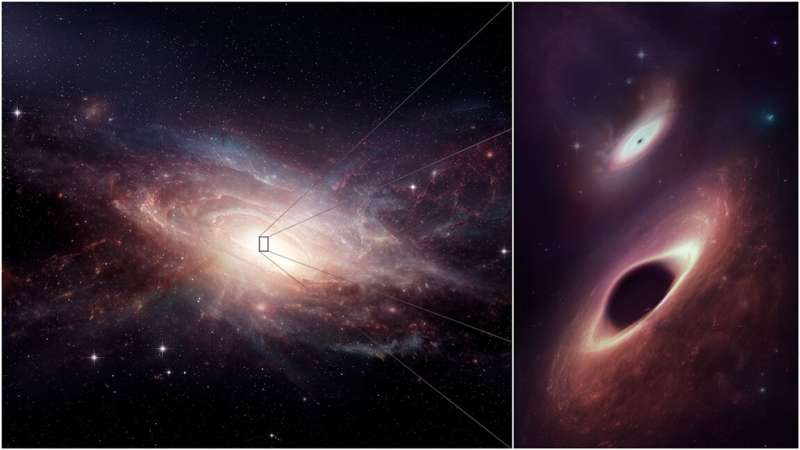Doomed pair of supermassive black holes the closest to collision ever seen
JANUARY 10, 2023
by Thomas Sumner, Simons Foundation

This artist's conception shows a late-stage galaxy merger and its two newly-discovered central black holes. The binary black holes are the closest together ever observed in multiple wavelengths. Credit: ALMA (ESO/NAOJ/NRAO); M. Weiss, NRAO/AUI/NSF
Astronomers have spotted two ghostly Goliaths en route to a cataclysmic meeting. The newfound pair of supermassive black holes are the closest to colliding ever seen, the astronomers announced on January 9 at an American Astronomical Society meeting in Seattle and in a paper published in The Astrophysical Journal Letters.
While close together in cosmological terms at just 750 light-years apart, the supermassive black holes won't merge for a few hundred million years. In the meantime, the astronomers' discovery provides a better estimate of how many supermassive black holes are also nearing collision in the universe.
That improved head count will aid scientists in listening for the universe-wide chorus of intense ripples in space-time known as gravitational waves, the largest of which are products of supermassive black holes close to collision in the aftermath of galaxy mergers. Detecting that gravitational-wave background will improve estimates of how many galaxies have collided and merged in the universe's history.
More:
https://phys.org/news/2023-01-doomed-pair-supermassive-black-holes.html
